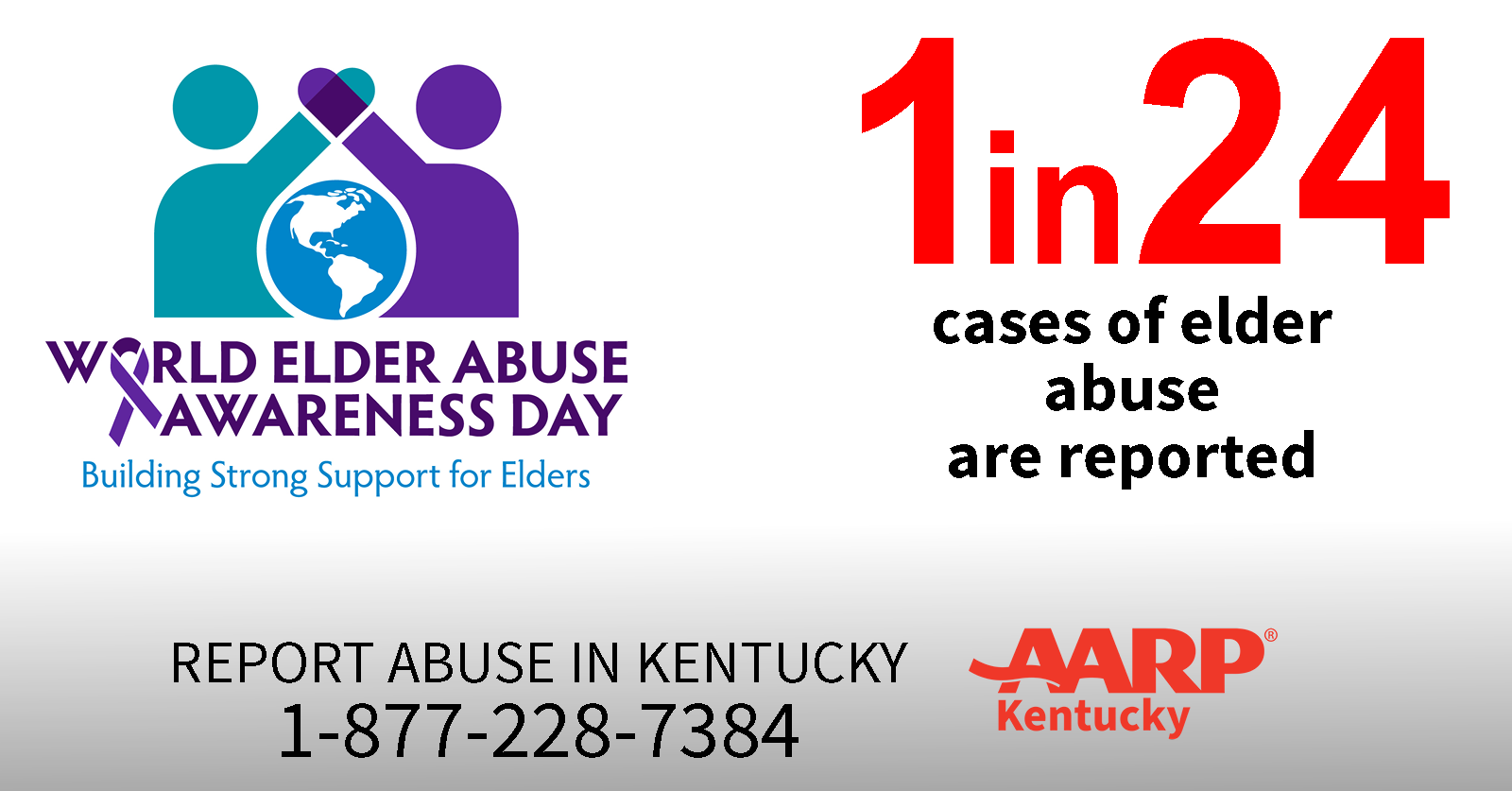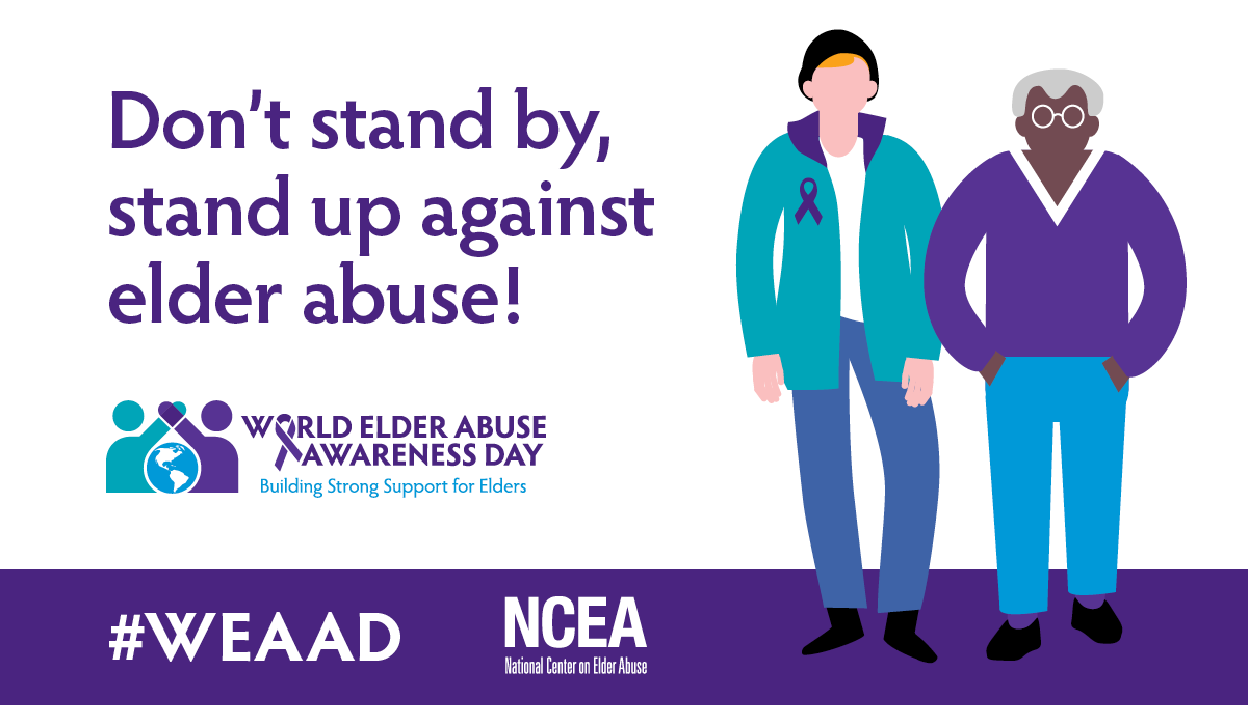AARP Hearing Center
Guest Contributor: Anastasia S. Johnson
Elder Abuse Awareness Month may be coming to a close, but we all deserve to lead happy and healthy lives free from abuse as we age - everyday. All too often many older adults are mistreated and more often than we think. Read more in this special report on the impact of elder abuse during the pandemic from a special guest contributor and AARP Kentucky Intern, Anastasia S. Johnson.
An Epidemic During the Pandemic: Elder Abuse
One in ten older adults age sixty and over experience abuse every year. Due to policy changes to protect the public from the COVID-19 virus, increased isolation amongst individuals is growing, thus expanding the prevalence of abuse. Elder abuse is a significant violation of fundamental human rights and requires a call to action. Measures need to be taken to ensure the protection of the older population.
Elder abuse is considered "a hidden epidemic." Only one in twenty-four cases is actually reported. The abuse comes in many forms, including physical, sexual, financial, psychological, and neglect. Perhaps older adults may not notice that they are being financially or psychologically abused, which is a cause for the underreporting. However, most commonly, 60% of the time, the family members of older adults are the perpetrators, which prohibits the victim from looking for help. This familial relationship makes seeking help extremely challenging.
Some older adults may feel guilty for their child's actions. At the same time, others may not want their loved ones to face the consequences of their abuse.
Taking on the role of being a caregiver is a risk factor for abuse in and of itself. However, there are several factors that some caregivers possess that increase the chance of abuse, such as stress, history of depression, history of alcohol abuse, isolation, and lack of support. Today, in the COVID-19 era, these risk factors have significantly increased. The improper use of alcohol and drugs is on the rise. From March to April, twenty-million people have filed for unemployment, causing financial strain. Not to mention many caregivers are under stress from working a full-time job, taking care of older loved ones, and managing their children's online schooling. The effects of the pandemic have enhanced the risk factors of elder abuse.
Shockingly, during the pandemic, the Minnesota Elder Justice Center reported a 25% reduction in calls. However, experts claim that this is more concerning than it is relieving. Older adults may not feel comfortable reporting abuse with the abuser being in such close quarters in the home. It seems as if the pandemic has caused a ripple effect that is negatively impacting the lives of older adults. The pandemic has led to social isolation, which has increased the risk factors of abuse, ultimately increasing abuse. We need to stop the ripple effect.
One potential avenue to take to promote the safety of older adults is the use of telemedicine. Federal agencies have recognized the advantages of telemedicine. For example, the Centers for Medicare and Medicaid Services expanded Telehealth services under the 1135 Waiver, allowing Medicare to pay for telehealth visits. Fortunately, older adults who would have otherwise avoided in-person medical care can virtually see a healthcare professional. This is especially crucial because, many times, healthcare providers are the first to notice signs of abuse.
With this technology, healthcare workers now have the unique opportunity to see the in- home environment. However, asking probing questions about safety with the potential perpetrator in the room can affect honest responses. Now is the time to advocate for public policies that put older adults in a position to get help. One possible solution is to require physicians to send out a home safety survey to medicare beneficiaries before the visit in hopes of gathering truthful answers. Another opportunity would be for some Medicare plans to include home health visits from social workers via Telehealth to ensure a safe environment. This is not an exhaustive list of policy suggestions to prevent elder abuse, but it is a start.
Elder abuse can happen to anyone in any setting, even in the comfort of one's own home.
It does not discriminate. By 2050 it is projected that there will be 320 million victims of elder mistreatment. Even though elder abuse will continue to persist even when the pandemic comes to an end, now is the time to focus on advancements in policies, community education, and caregiver support in an effort to challenge this statistic. Older people should be able to age in a world where elder abuse does not exist. We have the power to come together and fight for the injustices that older adults experience.
Take action to raise awareness toward prevention on this important social justice issue. Learn More: http://eldermistreatment.usc.edu/weaad-home

Anastasia Johnson is a Graduate student in Aging & Health at Georgetown University.

































































